4 Socialization
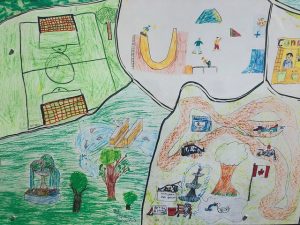
Learning Objectives
4.1. Why Socialization Matters
- Analyze the importance of socialization for individuals and society.
- Explain the nature versus nurture debate.
- Describe both the conformity of behaviour in society and the existence of individual uniqueness.
- Learn the roles of families and peer groups in socialization.
- Understand how we are socialized through formal institutions like schools, workplaces, and the government.
4.3. Socialization Across the Life Course
- Explain how people are socialized into new roles at age-related transition points.
- Describe when and how resocialization occurs.
Introduction to Socialization

In 2005, police detective Mark Holste followed an investigator from the Department of Children and Families into a Florida home. They were following up a statement from a neighbour. A small girl was reported peering from a broken window. This seemed odd because no one had seen a young child around the residence before. Neighbours believed only woman, her boyfriend and two adult sons lived there.
Who Was the Mysterious Girl in the Window?
Detective Holste and his team were shocked when they entered the house. It was the worst mess they had ever seen: infested with cockroaches, smeared with feces and urine from both people and pets, and filled with dilapidated furniture and ragged window coverings.
Detective Holste found a little girl with vacant eyes staring into the darkness. A newspaper report later described the detective’s first encounter with the child:
She lay on a torn, moldy mattress on the floor. She was curled on her side … her ribs and collarbone jutted out … her black hair was matted, crawling with lice. Insect bites, rashes and sores pocked her skin…. She was naked — except for a swollen diaper.… Her name, her mother said, was Danielle. She was almost seven years old. (DeGregory, 2008)
Danielle was rushed to hospital for medical treatment and evaluation. Through extensive testing, doctors determined that, although she was severely malnourished, Danielle was able to see, hear, and vocalize normally. However, she would not look anyone in the eyes, did not know how to chew or swallow solid food, did not cry, did not respond to stimuli that would typically cause pain, and did not know how to communicate either with words or simple gestures such as nodding “yes” or “no.” Likewise, although tests showed she had no chronic diseases or genetic abnormalities, the only way she could stand was with someone holding onto her hands, and she “walked sideways on her toes, like a crab” (DeGregory, 2008).
What had happened to Danielle? Beyond the basic requirements for survival, she had been neglected. Based on their investigation, social workers concluded that she had been left almost entirely alone in rooms like the one where she was found. Without regular interaction—the holding, hugging, talking, the explanations and demonstrations given to most young children—she had not learned to walk, speak, eat, interact, play or even understand the world around her. From a sociological point of view, Danielle had not had been socialized.
Socialization is the process through which people are taught to be members of a society. Socialization describes the ways that people come to understand society’s norms and expectations, to accept society’s beliefs, and to be aware of societal values. It also describes how people become aware of themselves and reflect on the suitability of their behaviour in their interactions. Socialization occurs as people engage and disengage in a series of roles throughout life. Each role, like the role of son or daughter, student, friend, employee, etc., is defined by the behaviour expected of the person.
Socialization is not the same as socializing (interacting with others, like family, friends, and coworkers). Socialization occurs through socializing. As Danielle’s story illustrates, even the most basic of human activities are learned. Even physical tasks like sitting, standing and walking had not automatically developed for Danielle as she grew. Without socialization, Danielle had not learned about the material culture of her society (the physical used by a culture): For example, she could not hold a spoon, bounce a ball or use a chair for sitting. She also had not learned nonmaterial culture, such as its beliefs, values, and norms. She had no understanding of the concept of family, did not know cultural expectations for using a bathroom, and had no sense of modesty. Most importantly, she hadn’t learned to use the symbols that make up language. And through language we learn who we are, how we fit with other people, and our natural and social worlds.
The complex process of socialization takes place through interaction with many individuals, groups, and social institutions. Socialization is not only critical to children. Socialization is a lifelong process that prepares us for new social environments and expectations we encounter.
Making Connections: Sociology in the Real World
What a Pretty Little Lady!
Peggy Orenstein on “princess culture”:

“Within a month [of starting preschool], Daisy threw a tantrum when I tried to wrestle her into pants. As if by osmosis she had learned the names and gown colors of every Disney Princess—I didn’t even know what a Disney Princess was. She gazed longingly into the tulle-draped windows of the local toy stores and for her third birthday begged for a “real princess dress” with matching plastic high heels” (Orenstein, 2012).
“What a cute dress!” “I like the ribbons in your hair.” “Wow, you look so pretty today.” According to Lisa Bloom, author of Think: Straight Talk for Women to Stay Smart in a Dumbed Down World, most of us use pleasantries like these when we first meet little girls. “So what?” you might ask. Bloom asserts that we are too focused on the appearance of young girls, and as a result our society is socializing them to believe that how they look is of vital importance.
Bloom may be on to something. How often do you tell a little boy how attractive his outfit is, how nice looking his shoes are, or how handsome he looks today? To support her assertions, Bloom cites, as one example, that about 50 percent of girls ages three to six worry about being fat (Bloom, 2011). We’re talking about kindergarteners who are concerned about their body image.
Sociologists are acutely interested in of this type of gender socialization, where societal expectations of how boys and girls should be — how they should behave, what toys and colours they should like, and how important their attire is — are reinforced. One solution to this type of gender socialization is being experimented with at the Egalia preschool in Sweden, where children develop in a genderless environment. All of the children at Egalia are referred to with neutral terms like “friend” instead of he or she. Play areas and toys are consciously set up to eliminate any reinforcement of gender expectations (Haney, 2011). Egalia strives to eliminate all societal gender norms from these children’s preschool world.
Extreme? Perhaps. So what is the middle ground? Bloom suggests that we start with simple steps: When introduced to a young girl, ask about her favourite book or what she likes. In short, engage her mind not her outward appearance (Bloom, 2011).
4.1. Why Socialization Matters
Socialization is critical both to individuals and to societies. Socialization shows how humans are interconnected with their social world. First, through teaching culture to new members that a society perpetuates itself. If new generations of a society do not learn its way of life, it ceases to exist. Whatever is distinctive about a culture must be transmitted to those who join it in order for a society to survive.
For Canadian culture to continue, for example, children in Canada must learn about cultural values related to democracy: They have to learn the norms of voting, as well as how to use material objects such as a ballot. Children learn the etiquette of eating in a restaurant. There are many ideas and objects that Canadians teach children in hopes of keeping the society’s way of life going.
Socialization is just as important to us as individuals. Through social interaction we gradually become able to see ourselves through the eyes of others, learn who we are and how we fit into the world. In addition, to function successfully in society, we need to learn the basics of both material and nonmaterial culture: everything from how to dress to what is suitable attire for a specific occasion; from when we sleep to what we sleep on; and from what is considered appropriate to eat for dinner to how to use the stove to prepare it. Most importantly, we must learn language—whether it is verbal or through signs—to communicate and to think. As Danielle’s tragic situation demonstrates, without socialization, we literally have no self. We are unable to function socially.
Nature versus Nurture
Some believe who we are is a result of nurture—the relationships and caring that surround us. Others argue that who we are is based entirely in genetics. According to this nature perspective, our personality, interests, and talents are set before birth. Who we are depends on nature.
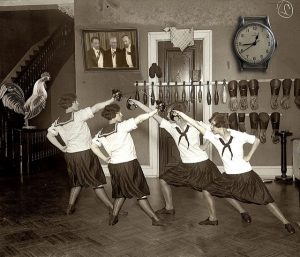
One way researchers try to prove the impact of nature is by studying twins. Some studies followed identical twins who were raised separately. These twins shared the same genetics but were socialized in different ways. Studying how identical twins raised apart are the same or different can give insight into how we are shaped by our genetic makeup versus our social environment.
For example, in 1968, twin girls born to a mentally ill mother were put up for adoption. However, they were also separated and raised in different households. They became one of five pairs of twins who were made subjects of a scientific study (Flam, 2007).
In 2003, the two women, then aged 35, were reunited. Elyse Schein and Paula Bernstein sat together in awe, feeling like they were looking into a mirror. Not only did they look alike, but they behaved alike, using the same hand gestures and facial expressions (Spratling, 2007). Studies like this point to the genetic roots of our temperament and behaviour.
On the other hand, studies of identical twins have difficulty accounting for differences in the development of inherited diseases. In the case of schizophrenia, studies show a strong biological component to the disease. The closer our family connection to someone with schizophrenia, the more likely we will develop it. However, even if our identical twin develops schizophrenia, we are less than 50 percent likely to develop it ourselves. Why is it not 100 percent? What occurs to produce the difference between genetically identical twins (Carey, 2012)?
Though genetics and hormones play an important role in human behaviour, biological explanations of human behaviour are incomplete from a sociological point of view. This is especially true when biology tries to explain complex aspects of human social life such as homosexuality, male aggressiveness, and female spatial skills. Biological explanation usually involves three components: the identification of a supposedly universal quality or trait of human behaviour, an attribution of a genetic source of the behavioural trait, and an argument why this behaviour makes it more likely that the genes will be passed to descendants. The conclusion of this reasoning is that this behaviour or quality is hard-wired and difficult to change (Lewontin, 1991).
However, the argument that males are naturally aggressive because of their hormonal structure does not consider the huge variations in the meaning or practice of aggression between cultures, nor the huge variations in definitions of aggression in different situations. Many men are not aggressive by any definition. And both men and women both have “male” hormones like testosterone. More interesting for the sociologist is that men who are not aggressive often get called sissies. This indicates that male aggression must be more about norms of male culture than genetic or hormonal.
Sociology is more concerned with the effect that socialization has on human behaviour: the nurture side of the nature versus nurture debate. Despite growing up apart, did Elyse Schein and Paula Bernstein share common ethnic, class or religious characteristics? What happens to people with schizophrenia in different societies? How does their social role integrate people with schizophrenia into a society (or not)? Whatever the role of genes or biology, genes are never expressed in a vacuum. Environmental influence always matters.
Making Connections: Case Study
The Life of Chris Langan, the Smartest Man You’ve Never Heard Of
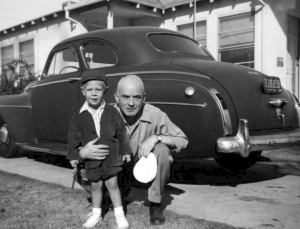
Bouncer. Firefighter. Factory worker. Cowboy. Chris Langan (b. 1952) has spent the majority of his adult life just getting by with jobs like these. He has no college degree, few resources, and a past filled with much disappointment. Chris Langan also has an IQ of over 195, nearly 100 points higher than the average person (Brabham, 2001). So why didn’t Chris become a neurosurgeon, professor, or aeronautical engineer? According to Macolm Gladwell in his book Outliers: The Story of Success (2008), Chris didn’t possess the set of social skills necessary to succeed on such a high level — skills that aren’t innate, but learned.
Gladwell looked to a recent study conducted by sociologist Annette Lareau in which she closely shadowed 12 families from various economic backgrounds and examined their parenting techniques. Parents from lower-income families followed a strategy of “accomplishment of natural growth,” which is to say they let their children develop on their own with a large amount of independence; parents from higher-income families, however, “actively fostered and accessed a child’s talents, opinions, and skills” (Gladwell, 2008). These parents were more likely to engage in analytical conversation, encourage active questioning of the establishment, and foster development of negotiation skills. The parents were also able to introduce their children to a wide range of activities, from sports to music to accelerated academic programs. When one middle class child was denied entry to a gifted and talented program, the mother petitioned the school and arranged additional testing until her daughter was admitted. Lower-income parents, however, were more likely to unquestioningly obey authorities such as school boards. Their children were not being socialized to comfortably confront the system and speak up (Gladwell, 2008).
What does this have to do with Chris Langan, deemed by some as the smartest man in the world (Brabham, 2001)? Chris was born in severe poverty, and he was moved across the country with an abusive and alcoholic stepfather. Chris’s genius went greatly unnoticed. After accepting a full scholarship to Reed College, his funding was revoked after his mother failed to fill out necessary paperwork. Unable to successfully make his case to the administration, Chris, who had received straight A’s the previous semester, was given F’s on his transcript and forced to drop out. After enrolling in Montana State University, an administrator’s refusal to rearrange his class schedule left him unable to find the means necessary to travel the 16 miles to attend classes. What Chris has in brilliance, he lacks in practical intelligence, or what psychologist Robert Sternberg defines as “knowing what to say to whom, knowing when to say it, and knowing how to say it for maximum effect” (Sternberg et al., 2000). Such knowledge was never part of his socialization.
Chris gave up on school and began working an array of blue-collar jobs, pursuing his intellectual interests on the side. Though he’s recently garnered attention from work on his “Cognitive Theoretic Model of the Universe,” he remains weary and resistant of the educational system.
As Gladwell concluded, “He’d had to make his way alone, and no one—not rock stars, not professional athletes, not software billionaires, and not even geniuses—ever makes it alone” (2008).
Individual and Society
How do sociologists explain conformity and individual uniqueness? How are individual differences, individual choice, or individuality possible if human development is about assuming socially defined roles? How can an individual have agency, the ability to choose and act independently of external constraints? Western society values individuality, being oneself or resisting peer pressure and other pressures to conform. Where society ends and where the individual begins is important in sociology.
Sociologists argue that individuals vary because their social environments vary. Socialization happens in different social environments—environments made up of the responses of others. Each environment imposes unique requirements. In one family, for example, children are permitted unlimited access to TV and video games; in another, there are no TV or video games. When growing up, children adapt and develop different play and recreation strategies. Parents and others respond to the child’s choices, either by reinforcing them or encouraging different choices. Through differences in social environments and responses, children gradually develop consistent relationships to world. Each child is unique because each child occupies a unique place in society and social relationships.
Sociologists recognize the importance of socialization for healthy individual and societal development. But how do sociologists from different theoretical paradigms approach this topic?
Structural functionalists would say that socialization is essential to society, both because it trains members to operate successfully in society and because socialization transmits culture to new generations. Individuals learn different social roles as they age. The roles come with norms and social expectations. These allow for predictable interactions between people.
A critical sociologist might argue that socialization reproduces inequality from generation to generation. Socialization conveys different expectations and norms to those with different social characteristics. For example, individuals are socialized with different expectations about their place in society according to their gender, social class, and race. As in the life of Chris Langan, this creates different and unequal opportunities and, therefore, differences between unique individuals.
A symbolic interactionist might study face-to-face exchanges and symbolic communication. For example, dressing baby boys in blue and baby girls in pink is one small way that messages are conveyed about differences in gender roles. For the symbolic interactionist, though, how these messages are constructed and interpreted are defined by the specific situation.
4.2. Agents of Socialization
Socialization helps people learn to function successfully in their social worlds. How does socialization occur? How do we learn to use the objects of society’s material culture? How do we adopt the beliefs, values, and norms of its nonmaterial culture? This learning takes place through interaction with various agents of socialization, like peer groups and families, plus both formal and informal social institutions.
Social Group Agents
Social groups provide the first experiences of socialization. Families, and later peer groups, communicate expectations and reinforce norms. People first learn to use the objects of material culture in these settings. People are introduced to the beliefs and values of society in these social groups, too.
Family
Family is the first agent of socialization. Parents, siblings, grandparents, members of an extended family all teach a child. For example, they show the child
- how to use objects(such as clothes,computers,eating utensils, books, bikes);
- how to relate to others (some as “family,” others as “friends,” still others as “strangers” or “teachers” or “neighbours”); and
- how the world works (what is “real” and what is “imagined”).
Families do not socialize children in a vacuum, however. Many social factors affect how a family raises children. For example, we can use sociological imagination to recognize that individual behaviours are affected by the historical period. Sixty years ago, it would not have been considered strict for a father to hit his son with a belt for misbehaviour, but today that action might be considered child abuse.
Sociologists recognize that racialization, social class, religion, and other social factors play an important role in socialization. For example, poor families may emphasize obedience and conformity when raising children, while wealthy families may emphasize judgment and creativity (National Opinion Research Center, 2008). This may be because working-class parents have less education and more repetitive-task jobs for which the ability to follow rules and to conform helps. Wealthy parents tend to have more education and often work in careers that require creative problem solving, so they teach their children behaviours that would benefit these positions. This means that children are socialized to take the types of jobs their parents already have, reproducing the class system (Kohn, 1977). Likewise, children are socialized by gender norms, perceptions of race and ethnicity, and class-related behaviours.
In Sweden, for instance, stay-at-home fathers are common. Government provides subsidized time off work—68 weeks for families with newborns at 80 percent of regular earnings—with the option of 52 of those weeks shared between both parents, with eight additional weeks for each parent. This encourages fathers to spend at least eight weeks at home with their newborns (Marshall, 2008). As one stay-at-home dad said, being home to take care of his baby son “is a real fatherly thing to do. I think that’s very masculine” (Associated Press, 2011). Overall, 90 percent of Swedish men participate in the paid leave program.
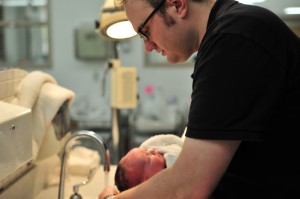
Canada allows for fewer weeks of paid parental leave at a smaller percent of regular earnings. Fewer fathers participate.
Researchers note that a father’s involvement in child raising has a positive effect on the parents’ relationship, the father’s personal growth, and the social, emotional, physical, and cognitive development of children (Marshall, 2008). How will this differ in Sweden and Canada because of the different paternal leave policies?
Peer Groups
A peer group is made up of people who are not necessarily friends but who are similar in age and social status and who share interests. Peer group socialization begins in the earliest years: for example, when kids on a playground teach younger children the norms about taking turns or the rules of a game.
Peer groups become more important to adolescents as they become more independent and develop an identity separate from parents. This is often a period of parental-child conflict when parental values conflict with those of peer groups. Peer groups provide adolescents’ first major socialization experience outside the families. They are especially influential for preferences in music, style, clothing, for sharing common social activities, and for learning to engage in romantic relationships. Adolescents experiment with new experiences outside the control of parents: sexual relationships, drug and alcohol use, political stances, hair and clothing choices, and so forth.
Studies have shown, however, that parental influence balances peer group influence. Conflict between parents and teenagers is usually temporary. Families exert more influence over educational choices and political, social, and religious attitudes.
Peer groups remain important agents of social integration. The way that youth divide themselves into cliques with varying degrees of status prepares them for the way the adult world is divided into status groups. The racialized, gender, intelligence, and wealth characteristics that lead to being accepted in adolescent cliques are the same characteristics that divide people into status groups in adulthood.
Institutional Agents
The social institutions of our culture also inform our socialization. Formal institutions — like schools, workplaces, and the government — teach people how to behave in and navigate these systems. Other institutions, like the media, contribute to socialization by inundating us with messages about norms and expectations.
School
Most Canadian children spend about seven hours a day and 180 days a year in school, making school important in socialization. In elementary and junior high, compulsory education amounts to over 8,000 hours in the classroom (OECD, 2013). Students are in school not only to study math, reading, science, and other subjects—the manifest function of this system. Schools also serve a latent function in society by socializing children into behaviours like teamwork, following a schedule, and using textbooks.

School and classroom rituals, led by teachers serving as role models and leaders, regularly reinforce what society expects from children. Sociologists describe this aspect of schools as the hidden curriculum, the informal teaching done by schools.
For example, North American schools have built competition into the way grades are awarded. Students learn to evaluate themselves within a hierarchical system of A, B, C, etc. students (Bowles & Gintis, 1976).
Different lessons can be taught by different instructional techniques. When children participate in a relay race or a math contest, they learn that there are winners and losers in society. When children are required to work together on a project, they practice teamwork with other people in cooperative situations. Bowles and Gintis argue that the hidden curriculum prepares children for a life of conformity in the adult world. Children learn how to deal with bureaucracy, rules, expectations, to wait their turn, and to sit still for hours during the day. The latent functions of competition, teamwork, classroom discipline, time awareness, and dealing with bureaucracy are features of the hidden curriculum.
Schools also socialize children by teaching them overtly about citizenship and nationalism. In the United States, children are taught to say the Pledge of Allegiance. Most school districts require classes about U.S. history and geography. In Canada, on the other hand, critics complain that students do not learn enough about national history, which undermines the development of a sense of shared national identity (Granatstein, 1998).
Textbooks in Canada are also continually scrutinized and revised to update attitudes toward different cultures in Canada as well as changing perspectives on historical events. Later generations are socialized to a different national or world history. For example, recent textbook editions include information about the mistreatment of First Nations, more accurately reflecting those events than textbooks of the past. Schools educate students explicitly about aspects of citizenship important for participation in a modern, heterogeneous culture.
Making Connections: Sociology in the Real World
Controversial Textbooks

CC BY-SA 3.0 by Chris 73 / Wikimedia Commons
On August 13, 2001, 20 South Korean men gathered in Seoul. Each chopped off one of his own fingers because of textbooks. These men took drastic measures to protest eight middle school textbooks approved by Tokyo for use in Japanese middle schools. According to the Korean government (and other East Asian nations), the textbooks glossed over negative events in Japan’s history at the expense of other Asian countries (The Telegraph, 2001).
In the early 1900s, Japan was one of Asia’s more aggressive nations. Korea was held as a colony by the Japanese between 1910 and 1945. Today, Koreans argue that the Japanese are whitewashing that colonial history through these textbooks. One major criticism is that they do not mention that, during World War II, the Japanese forced Korean women into sexual slavery. The textbooks describe the women as having been “drafted” to work, a euphemism that downplays the brutality of what actually occurred. Some Japanese textbooks dismiss an important Korean independence demonstration in 1919 as a “riot.” In reality, Japanese soldiers attacked peaceful demonstrators, leaving roughly 6,000 dead and 15,000 wounded (Crampton, 2002).
Although it may seem extreme that these people were so enraged about how events are described in a textbook that they would resort to dismemberment, the protest affirms that textbooks are a significant tool of socialization in state-run education systems.
The Workplace
Just as children spend much of their day at school, most Canadian adults spend a significant amount of time at a workplace. Although socialized into their culture since birth, workers require new socialization both in terms of material culture (such as how to operate the copy machine) and nonmaterial culture (such as whether it is okay to speak directly to the boss, or how to share refrigerator space).
Different jobs require different types of socialization. In the past, many people worked a single job until retirement. Today, people can switch jobs at least once a decade. Between the ages of 18 and 44, the average younger baby boomer held 11 different jobs (U.S. Bureau of Labor Statistics, 2010). People must now be socialized by a variety of work environments.
Religion
While some religious practice is informal, this section focuses on practices related to formal institutions.
Religion remains an important agent of socialization for many. Canada has many synagogues, temples, churches, mosques, and similar religious sites where people gather to worship and learn. Like other institutions, these teach participants how to interact with their material culture (like a mezuzah, a prayer rug, or a communion wafer). For some people, important ceremonies related to family structure—like marriage and birth—are connected to religious celebrations. Many religious institutions contribute to reinforcement of gender norms. From ceremonial rites of passage that reinforce the family unit, to power dynamics which reinforce gender roles, religion fosters a shared set of socialized values that are passed on through society.
Making Connections: Sociology in the Real World
Girls and Movies

CC0 open domain image.
Pixar is one of the largest producers of children’s movies in the world and has released large box office draws, such as Toy Story, Cars, The Incredibles, and Up. What Pixar has never before produced is a movie with a female lead role. This changed with Pixar’s movie Brave in 2012. Before Brave, women in Pixar served as supporting characters and love interests. In Up, for example, the only human female character dies within the first ten minutes of the film. For the millions of girls watching Pixar films, there are few strong characters or roles for them to relate to. If they do not see possible versions of themselves, they may come to view women as secondary to the lives of men.
The animated films of Pixar’s parent company, Disney, have many female lead roles. Disney is well known for films with female leads, such as Snow White, Cinderella, The Little Mermaid, and Mulan. Many of Disney’s movies star a female, and she is nearly always a princess figure. If she is not a princess to begin with, she typically ends the movie by marrying a prince or, in the case of Mulan, a military general. Although not all “princesses” in Disney movies play a passive role relative to male characters, they typically find themselves needing to be rescued by a man, and the happy ending they all search for includes marriage.
Alongside this prevalence of princesses, many parents express concern about the culture of princesses that Disney has created. Peggy Orenstein addresses this problem in her popular book, Cinderella Ate My Daughter. Orenstein wonders why every little girl is expected to be a “princess” and why pink has become an all-consuming obsession for many young girls. Another mother wondered what she did wrong when her three-year-old daughter refused to do “non-princessy” things, including running and jumping. The effects of this princess culture can have negative consequences for girls throughout life. An early emphasis on beauty and sexiness can lead to eating disorders, low self-esteem, and risky sexual behaviour among older girls.
What should we expect from Pixar’s Brave, the company’s first film to star a female character? Although Brave features a female lead, she is still a princess. Will this film offer any new type of role model for young girls? (Barnes, 2010; O’Connor, 2011; Rose, 2011).
Government
To be defined as an “adult” usually means being 18 years old, the age at which a person becomes legally responsible for themselves. And 65 is the start of “old age” since most people become eligible for senior benefits then. Many rites of passage today are based on age norms established by the government.
When we enter one these new categories—adult, taxpayer, senior—we must be socialized into this new role. Seniors, for example, must learn the ropes of obtaining pension benefits. This government program marks the point at which we require socialization into a new category.
Mass Media
Mass media refers to the distribution of information to a wide audience via television, newspapers, radio, and the internet. With the average person spending over four hours a day in front of the TV (and children averaging even more screen time), media greatly influences social norms (Roberts, Foehr, & Rideout, 2005; Oliveira,2013). In a 2010 survey abouttime use, Statistics Canada report that 73percent of respondents saidtheywatched2hours52minutesoftelevisiondaily(see the Participants column in Table 4.1 below).
Television continues to be the mass medium that occupies much free time of the average Canadian, but the internet is the fastest growing mass medium. In the Statistics Canada survey, daily television use declined from 77 percent to 73 percent between 1998 and 2010, but computer use increased in all age groups from 5 percent to 24 percent, and averaging 1 hour 23 minutes a day. People who played video games doubled from 3 percent to 6 percent between 1998 and 2010, and the average daily use increased from 1 hour 48 minutes to 2 hours 20 minutes (Statistics Canada, 2013). People learn about objects of material culture (like new technology, transportation, and consumer options), as well as nonmaterial culture—what is true (beliefs), what is important (values), and what is expected (norms) through mass media.
| Activity group | Population | Participants | Participation rate | ||||||
|---|---|---|---|---|---|---|---|---|---|
| Total | Male | Female | Total | Male | Female | Total | Male | Female | |
| hours and minutes | hours and minutes | percentage | |||||||
| 1. Television, reading, and other passive leisure | 02:29 | 02:39 | 02:20 | 03:08 | 03:19 | 02:58 | 79 | 80 | 79 |
| Watching television | 02:06 | 02:17 | 01:55 | 02:52 | 03:03 | 02:41 | 73 | 75 | 71 |
| Reading books, magazines, newspapers | 00:20 | 00:18 | 00:23 | 01:26 | 01:29 | 01:25 | 24 | 20 | 27 |
| Other passive leisure | 00:03 | 00:03 | 00:02 | 01:04 | 01:16 | 00:52 | 4 | 4 | 4 |
| 2. Active leisure | 01:13 | 01:27 | 00:59 | 02:22 | 02:42 | 02:01 | 51 | 54 | 49 |
| Active sports | 00:30 | 00:37 | 00:23 | 01:54 | 02:12 | 01:34 | 26 | 28 | 25 |
| Computer use | 00:20 | 00:23 | 00:17 | 01:23 | 01:32 | 01:14 | 24 | 25 | 23 |
| Video games | 00:09 | 00:14 | 00:04 | 02:20 | 02:40 | 01:38 | 6 | 9 | 4 |
| Other active leisure | 00:14 | 00:13 | 00:15 | 02:05 | 02:06 | 02:04 | 11 | 10 | 12 |
| Note: Average time spent is the average over a 7-day week. Source: Statistics Canada, General Social Survey, 2010 (Statistics Canada, 2011). Note: this survey asked approximately 15,400 Canadians aged 15 and over to report in a daily journal details of the time they spent on various activities on a given day. Because they were reporting about a given day, the figures sited about the average use of television and other media differ from reports provided by BBM and other groups on the average weekly usage, like the figure of 4 hours per day of TV cited in Roberts, Foehr, and Rideout (2005) above. |
|||||||||
4.3. Socialization Across the Life Course
Socialization isn’t a one-time or short-term event. Socialization is a lifelong process. Human development follows a pattern of engaging and disengaging from a series of roles throughout life.
In Canada, age norms and “time-related rules and regulations” influence lifelong socialization (Setterson, 2002). As we age, we encounter age-related transition points requiring socialization into a new role, such as becoming school age, entering the workforce, or retiring. At each point in life, we shed previous roles and assume new ones. The institutions and situations require both learning and revising self-definition: You are no longer living at home; you have a job! You are no longer a child; you’re in the army! You are no longer single; you are going to have a child! You are no longer free; you are going to jail! You are no longer in mid-life; it’s retirement time!
Many of life’s social expectations are clear and enforced on a cultural level. Through interacting with others and watching others interact, roles become clear. While in elementary school, having a boyfriend or girlfriend may have been considered undesirable. The socialization in high school changes the expectation. By observing the excitement and importance attached to dating and relationships in high school, it becomes apparent that in addition to being a child and a student, there’s an expectation of being a significant other as well.
Adolescence (puberty to about 18 years old) is characterized by the role adjustment from childhood to adulthood. The self is redefined through a process of “socialized anxiety” (Davis, 1944), re-examination and reorientation. As Jean Piaget described it, adolescence is a “decisive turning point … at which the individual rejects, or at least revises his estimate of everything that has been inculcated in him and acquires a personal point of view and a personal place in life” (1947). Adolescence involves a fundamental “growth process” according to Edgar Friedenberg “to define the self through the clarification of experience and to establish self-esteem” (1959).
Making Connections: Sociology in the Real World
Gap Year: How Different Societies Socialize Young Adults
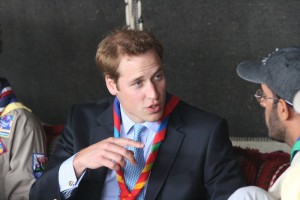
Have you ever heard of a gap year? It’s a common custom in British society. When teens finish their secondary schooling (i.e., high school), they often take a year “off” before entering college. Frequently, they might take a job, travel, or find other ways to experience another culture. Prince William, the Duke of Cambridge, spent his gap year practising survival skills in Belize, teaching English in Chile, and working on a dairy farm in the United Kingdom (Prince of Wales, 2012a). His brother, Prince Harry, advocated for AIDS orphans in Africa and worked as a jackeroo (a novice ranch hand) in Australia (Prince of Wales, 2012b).
In Canada, this life transition point is socialized quite differently, and taking a year off is generally frowned upon. Instead, Canadian youth are encouraged to pick career paths by their mid-teens, to select a university or college and a major by their late teens, and to have completed all university schooling or technical training for their career by their early 20s.
In other nations, this phase of the life course is tied into conscription, a term that describes compulsory military service. Egypt, Austria, Switzerland, Turkey, and Singapore all have this system in place. Youth in these nations (often only males) are expected to undergo a number of months or years of military training and service.
How might your life be different if you lived in one of these countries? Can you think of similar social norms — related to life age-transition points — that vary from country to country?
In some cultures, adolescence is marked by a clear rite of passage, a formal ritual that marks a life cycle transition from a previous status to a new status. In modern North American society, the rites of passage are not so clear cut or socially recognized, although graduation from formal education—high school or college—involves a formal, ceremonial rite of passage and socialization into a new set of expectations.
Educational expectations vary not only from culture to culture, but from social class to social class. While middle- or upper-class families may expect a child to attend a four-year university after graduating from high school, other families may expect their child to immediately begin working full-time, as other family members may have done.
Adulthood brings a new set of socialization challenges, expectations, and new roles to fill. Social roles continue to evolve as we age. Wild nights out and serial dating of youth culture become less acceptable. Responsibility and commitment are emphasized as pillars of adulthood. Men and women are expected to “settle down.” During this period, many people enter marriage or a civil union, bring children into their families, and focus on a career path. They become partners or parents instead of students or significant others.
Just as young children pretend to be doctors or lawyers, play house, and dress up, adults also engage anticipatory socialization, the preparation for future life roles. Examples include a couple who cohabitate before marriage, or soon-to-be parents who read infant care books and prepare their home for a baby. University students volunteer take internships, or enter co-op programs to explore chosen careers. Adults begin planning for their retirement, saving money if possible, and looking into future health care options. The transition into any new life role, despite the social structure that supports it, can be difficult.
Socialization is ongoing throughout adulthood in another way. Contemporary society features a fluidity of roles, compared to earlier times when people often married only once, lived in one location, or had one career.
In previous times, role transitions were more predictable —from school to work to retirement, from single to married to parenting to empty nest, etc. Today’s roles are more fluid. As a result, social identities have become more flexible, more adaptable to unpredictable transitions, more open to taking on new roles or choosing from a globalized range of cultural values and practices.
Bauman (2004) observes that this fluidity changes transition stages of the adult life cycle. In the absence of any clear, permanent, institutional structures for transition, people must rely on themselves to provide their own continuity. Jobs disappear overnight, marriages end, friends and family move, and online communities emerge. Life choices may be seen as temporary and tradeoff between maximizing flexibility or commitment. Individuals may enter jobs while thinking about leaving them, take opportunities to continually retrain, upgrade skills, and make contacts to be prepared should a better job appear. They enter into romantic relationships as “a relationship that lasts only as long as, and not a moment longer than, the satisfaction it brings to both partners” (2004). In love, dumping the partner is a normal event. People may now cultivate a wider network of “weak ties” rather than committing to deep friendships.
Making Connections: Sociology in the Real World
The Long Road to Adulthood for Millennials

Millennials, sometimes also called Gen Y, is a term that describes the generation born during the early 1980s to early 1990s. They are the generation that is currently between the ages of 18 and 33. While the recession was in full swing, many were in the process of entering, attending, or graduating from high school and college. With employment prospects at historical lows, large numbers of graduates were unable to find work, sometimes moving back in with their parents and struggling to pay back student loans.
According to The New York Times, this economic stall is causing the Millennials to postpone what most North Americans consider to be adulthood: “The traditional cycle seems to have gone off course, as young people remain untethered to romantic partners or to permanent homes, going back to school for lack of better options, traveling, avoiding commitments, competing ferociously for unpaid internships or temporary … jobs, forestalling the beginning of adult life” (Henig, 2010).
In Canada:
- 30 percent of Millennials find it difficult to support themselves on their low wages
- 44 percent find it difficult to pay for their education
- 38 percent are strapped by loan payments
- 51 percent still live with their parents
- 90 percent feel overwhelmed and experience excessive stress (Tsintziras, 2013)
The five milestones, Henig writes, that define adulthood, are “completing school, leaving home, becoming financially independent, marrying, and having a child” (2010). These social milestones are taking longer for Millennials to attain, if they are attained at all.
Sociologists wonder what long-term impact this generation’s situation may have on society as a whole. It is possible that adulthood will need to be redefined with new milestones. Meanwhile, preliminary survey research on Generation Z, born after 2000, suggests that these children of the post-boomer Generation X are both completely fluent in digital technology and raised to be more self-reliant. It is also estimated that for each Generation Z member to enter the workforce, three baby boomers will be retiring. However, the world they confront is characterized by monumental global risks such as climate change, geopolitical insecurity and increasing inequality (Bland, 2016).
Resocialization
In the process of resocialization, old behaviours helpful in a previous role are removed because they are no longer useful. Resocialization becomes necessary when a person moves to a senior care centre, goes to boarding school, or serves time in jail. In the new environment, the old rules no longer apply. The process of resocialization is typically more stressful than normal socialization because people have to unlearn their usual behaviour.
The most common way resocialization occurs is in a total institution where people are isolated from society and forced to follow new rules. A ship at sea is a total institution, as are religious convents, prisons, and some cults. They are places cut off from larger society. The 15,000 Canadians who lived in federal prisons or penitentiaries at the end of 2012 are also members of a total institution (Sapers, 2013). The military is another total institution.

Public domain via Wikipedia
Many are socialized into an institution through a two-part process. First, members entering an institution must leave behind their old identity through a degradation ceremony. In a degradation ceremony, new members lose the aspects of their old identity and are given new identities. The process can be gentle. To enter a senior care home, the elderly must leave a family home and give up many belongings, part of their long-standing identity. Though caretakers guide the elderly compassionately, the process can still be one of loss. In many cults, this process is also gentle and happens in a supportive and caring environment.
In other situations, however, the degradation ceremony can extreme. Erving Goffman referred to the process of being stripped external identity as a “mortification of the self” (1961). New prisoners lose freedom, rights (including the right to privacy), and personal belongings. When entering the army, soldiers have their hair cut short. Their old clothes are removed and they wear matching uniforms. These individuals must give up any markers of their former identity to be resocialized into identity as a soldier.
After new members of an institution are stripped of their old identity, they build a new to match the institution. In the military, soldiers learn new rules and bond with one another through basic training. They follow structured schedules set by their leaders. Soldiers must keep their areas clean for inspection, march in correct formations, and salute when in the presence of superior officers, etc.
Learning to deal with life after living in a total institution requires yet another process of resocialization. In the Canadian military, soldiers learn discipline and a capacity for hard work. They set aside personal goals to achieve a mission, and they take pride in the accomplishments of their units. Many soldiers who leave the military transition these skills into excellent careers. Others find themselves lost upon leaving, uncertain about the outside world, and what to do next. The process of resocialization to civilian life can be complicated, especially for soldiers who served in war zones.
Chapter Summary
Why Socialization Matters
Socialization is important because it allows societies and cultures to continue; it is also a key part of individual development. Who we are is affected by both nature (our genetic and hormonal makeup) and nurture (the social environment in which we are raised). Sociology is most concerned with the way that society influences our behaviour patterns. This influence can be seen by the way behaviour varies across class and gender, for example.
Agents of Socialization
Our interactions with social groups, like families and peers, teach us how others expect us to behave. Likewise, a society’s formal and informal institutions socialize us. Schools, workplaces, and the media communicate and reinforce cultural norms and values.
Socialization Across the Life Course
Socialization is a lifelong process as we enter new phases of life, such as adulthood or old age. Resocialization is a process that removes the socialization we acquired over time and replaces it with new rules and roles. Because it involves removing old habits, resocialization can be a stressful and difficult process.
Key Terms
adolescence: A period stretching from puberty to about 18-years-old characterized by the role adjustment from childhood to adulthood.
agency: The ability to choose and act independently of external constraints.
anticipatory socialization: When we prepare for future life roles.
degradation ceremony: The process by which new members of a total institution lose aspects of their old identity and are given new ones.
hidden curriculum: The informal teaching done in schools that socializes children to societal norms.
mass media: The distribution of impersonal information to a wide audience via television, newspapers, radio, and the internet.
nature: The influence of our genetic makeup on self-development.
nurture: The role that our social environment plays in self-development.
peer group: A group made up of people who are similar in age and social status and who share interests.
resocialization: The process by which old behaviours are removed and new behaviours are learned in their place.
rite of passage: A ritual that marks a life cycle transition from a previous status to a new status.
role: The behaviour expected of a person who occupies a particular position.
self: A person’s distinct sense of identity as developed through social interaction.
socialization: The process wherein people come to understand societal norms and expectations, to accept society’s beliefs, and to be aware of societal values.
total institution: An institution in which members are required to live in isolation from the rest of society.
Chapter Quiz
4. Introduction to Socialization
- Socialization describes:
- How people interact during social situations.
- How people learn societal norms, beliefs, and values.
- A person’s internal mental state when in a group setting.
- The difference between introverts and extroverts..
- How did nearly complete isolation as a child affect Danielle’s verbal abilities?
- She could not communicate at all.
- She never learned words, but she did learn signs.
- She could not understand much, but she could use gestures.
- She could understand and use basic language like “yes” and “no.”
4.1. Why Socialization Matters
- Why do sociologists need to be careful when drawing conclusions from twin studies?
- The results do not apply to singletons.
- The twins were often raised in different ways.
- The twins may turn out to actually be fraternal.
- The sample sizes are often small.
- From a sociological perspective, which factor does not greatly influence a person’s socialization?
- Gender
- Class
- Blood type
- Race
- Chris Langan’s story illustrates that:
- Children raised in one-parent households tend to have higher IQs.
- Intelligence is more important than socialization.
- Socialization can be more important than intelligence.
- Neither socialization nor intelligence affects college admissions.
- Why are wealthy parents more likely than poor parents to socialize their children toward creativity and problem solving?
- Wealthy parents are socializing their children toward the skills of white-collar employment.
- Wealthy parents are not concerned about their children rebelling against their rules.
- Wealthy parents never engage in repetitive tasks.
- Wealthy parents are more concerned with money than with a good education.
- How do schools prepare children to one day enter the workforce?
- With a standardized curriculum
- Through the hidden curriculum
- By socializing them in teamwork
- All of the above
- Which one of the following is not a way people are socialized by religion?
- People learn the material culture of their religion.
- Life stages and roles are connected to religious celebrations.
- An individual’s personal, internal experience of a divine being leads to their faith.
- Places of worship provide a space for shared group experiences.
- Which of the following is a manifest function of schools?
- Understanding when to speak up and when to be silent
- Learning to read and write
- Following a schedule
- Knowing locker room etiquette
- Which of the following is typically the earliest agent of socialization?
- School
- Family
- Mass media
- Workplace
4.3. Socialization Across the Life Course
- Which of the following is not an age-related transition point when Canadians must be socialized to new roles?
- Infancy
- School age
- Adulthood
- Senior citizen
- Which of the following is true regarding Canadian socialization of recent high school graduates?
- They are expected to take a year off before college.
- They are required to serve in the military for one year.
- They are expected to enter college, trade school, or the workforce shortly after graduation.
- They are required to move away from their parents.
Short Answer
4.1. Why Socialization Matters
-
Why are twin studies an important way to learn about the relative effects of genetics and socialization on children? What questions about human development do you believe twin studies are best for answering? What types of questions would twin studies not be as helpful?
-
Why do you think that people like Chris Langan continue to have difficulty even after they are helped through societal systems? What is it they’ve missed that prevents them from functioning successfully in the social world?
-
Do you think it is important that parents discuss gender roles with their young children, or is gender a topic better left for later? How do parents consider gender norms when buying their children books, movies, and toys? How do you believe they should consider it?
-
Based on your observations, when are adolescents more likely to listen to their parents or to their peer groups when making decisions? What types of dilemmas lend themselves toward one social agent over another?
4.3. Socialization Across the Life Course
-
Consider a person who is moving into a university residence, or attending university or boarding school, or even a child beginning kindergarten. How is the process the student goes through a form of socialization? What new cultural behaviours must the student adapt to?
-
Do you think resocialization requires a total institution? Why or why not? Can you think of any other ways someone could be resocialized?
Further Research
4. Introduction to Socialization
Lawrence Kohlberg was most famous for his research using moral dilemmas. He presented dilemmas to boys and asked them how they would judge the situations. Read about Kohlberg’s most famous moral dilemma, known as the Heinz dilemma: http://www.simplypsychology.org/kohlberg.html.
4.1. Why Socialization Matters
Learn more about five other sets of twins who grew up apart and discovered each other later in life: https://lornareiko.wordpress.com/2009/10/08/identical-twins-who-were-separated-at-birth-what-are-they-like/.
See the controversy surrounding one Canadian couple’s refusal socialize their child into gender norms: http://www.dailymail.co.uk/news/article-1389593/Kathy-Witterick-David-Stocker-raising-genderless-baby.html.
4.3. Socialization Across the Life Course
Homelessness is an endemic problem among veterans. Many soldiers leave the military or return from war and have difficulty resocializing into civilian life. Learn more about this problem of homeless veterans: http//openstaxcollege.org/l/NCHV
References
4. Introduction to Socialization
DeGregory, L. (2008, July 31). The girl in the window. Tampa Bay Times. Retrieved from http://www.tampabay.com/features/humaninterest/article750838.ece.
Harlow, H. F. (1971). Learning to love. New York, NY: Ballantine.
Harlow, H. F., & Kuenne Harlow, M. (1962, November). Social deprivation in monkeys. Scientific American, 137–46.
4.1. Why Socialization Matters
Bem, S. (1989). Genital knowledge and gender constancy. Child Development, 60, 649-662.
Bloom, L. (2011, June 22). How to talk to little girls. The Huffington Post. Retrieved from http://www.huffingtonpost.com/lisa-bloom/how-to-talk-to-little-gir_b_882510.html.
Cooley, C. H. (1902). The looking glass self. Human Nature and Social Order (pp. 179–185). New York, NY: Scribner’s.
Durkheim, É. (2011) . Suicide. London, UK: Routledge. (Original work published 1897).
Erikson, E. (1963). Childhood and society. New York, NY: W. W. Norton.
Fagot, B. I., Leinbach, M. D., & Hagan, R. (1986). Gender labeling and the adoption of sex-typed behaviors. Developmental Psychology, 224(4), 440-443. doi: http://dx.doi.org/10.1037/0012-1649.22.4.440.
Fagot, B. I., & Leinbach, M. D. (1989). The young child’s gender schema: Environmental input, internal organization. Child Development, 60: 663-672.
Freud, S. (2000). Three essays on theories of sexuality. New York, NY: Basic Books. (Original work published 1905).
Gilligan, C. (1982). In a different voice: Psychological theory and women’s development. Cambridge, MA: Harvard University Press.
Gilligan, C. (1990). Making connections: The relational worlds of adolescent girls at Emma Willard School. Cambridge, MA: Harvard University Press.
Haney, P. (2011, June 28). Genderless preschool in Sweden. Neatorama. Retrieved from http://www.neatorama.com/2011/06/28/genderless-preschool-in-sweden.
Kohlberg, L. (1981). The psychology of moral development: The nature and validity of moral stages. New York, NY: Harper and Row.
Lasch, C. (1979). The culture of narcissism: American life in an age of diminishing expectations. New York, NY: W. W. Norton & Co.
Mead, G. H. (1934). In C. W. Morris (Ed.), Mind, self and society. Chicago, IL: University of Chicago Press.
Orenstein, P. (2012). Cinderella ate my daughter. New York, NY: Harper Collins.
Brabham, D. (2001, August 21). The smart guy. [PDF] Newsday. Retrieved from http://www.megafoundation.org/CTMU/Press/TheSmartGuy.pdf.
Brym, R., Roberts, L. W., Lie, J., & Rytina, S. (2013). Sociology: Your compass for a new world (4th ed.) Toronto, ON: Nelson.
Carey, N. (2012). The epigenetics revolution: How modern biology is rewriting our understanding of genetics, disease and inheritance. New York, NY: Columbia University Press.
Flam, F. (2007, December 9). Separated twins shed light on identity issues. The Philadelphia Inquirer. Retrieved from http://www.chron.com/news/nation-world/article/Separated-twins-shed-light-on-identity-issues-1808191.php.
Gladwell, M. (2008). The trouble with geniuses, Part 2. In, Outliers: The story of success. New York, NY: Little, Brown and Company.
Spratling, C. (2007, November 25). Nature and nurture. Detroit Free Press. Retrieved from http://articles.southbendtribune.com/2007-11-25/news/26786902_1_twins-adoption-identical-strangers.
Sternberg, R. J., Forsythe, G. B., Hedlund, J., Horvath, J., Snook, S., Williams, W. M., Wagner, R. K., & Grigorenko, E. L. (2000). Practical intelligence in everyday life. New York, NY: Cambridge University Press.
Associated Press. (2011, October 23). Swedish dads swap work for child care. The Gainesville Sun. Retrieved from http://www.gainesville.com/article/20111023/wire/111029834?template=printpicart.
Barnes, B. (2010, December 20). Pixar removes its first female director. The New York Times. Retrieved from http://artsbeat.blogs.nytimes.com/2010/10/20/first-woman-to-direct-a-pixar-film-is-instead-first-to-be-replaced/?ref=arts.
Bowles, S., & Gintis, H. (1976). Schooling in capitalistic America: Educational reforms and the contradictions of economic life. New York, NY: Basic Books.
Crampton, T. (2002, February 12). The ongoing battle over Japan’s textbooks. The New York Times. Retrieved from http://www.nytimes.com/2002/02/12/news/12iht-rtexts_ed3_.html.
Davis, A. (1944). Socialization and adolescent personality. In, Adolescence, Yearbook of the National Society for the Study of Education, 1944, 43(Part I).
Davis, W. (1985). The serpent and the rainbow. New York, NY: Simon and Schuster.
Friedenberg, E. (1959). The vanishing adolescent. Boston, MA: Beacon Press.
Granatstein, J. L. (1998). Who killed Canadian history? Toronto, ON: HarperCollins.
Kohn, M. L. (1977). Class and conformity: A study in values. Homewood, IL: Dorsey Press.
Marshall, K. (2008). Fathers’ use of paid parental leave [PDF](Statistics Canada catalogue no. 75-001-X.) Retrieved from http://www.statcan.gc.ca/pub/75-001-x/2008106/pdf/10639-eng.pdf.
National Opinion Research Center. (2008). General social surveys, 1972–2006: Cumulative codebook. Chicago, IL: National Opinion Research Center.
O’Connor, L. (2011, January 26). The princess effect: Are girls too “tangled” in Disney’s fantasy? Annenberg Digital News. Retrieved from http://www.neontommy.com/news/2011/01/princess-effect-are-girls-too-tangled-disneys-fantasy.
OECD. (2013). Education at a glance 2013: OECD indicators. Paris, France: OECD Publishing. doi: http://dx.doi.org/10.1787/eag-2013-en.
Oliveira, M. (2013, April 26). Canadians watch 30 hours of TV but for many web dominates free time. Toronto Star. Retrieved from http://www.thestar.com/life/technology/2013/04/26/canadians_watch_30_hours_of_tv_but_for_many_web_dominates_free_time.html.
Piaget, J. (1947). The psychology of intelligence. New York, NY: Harcourt, Brace.
Roberts, D. F., Foehr, U. G., & Rideout, V. (2005). Parents, children, and media: A Kaiser Family Foundation survey. [PDF] The Henry J. Kaiser Family Foundation. Retrieved from http://www.kff.org/entmedia/upload/7638.pdf.
Rose, S. (2011, July 14). Studio Ghibli: Leave the boys behind. The Guardian. Retrieved from http://www.guardian.co.uk/film/2011/jul/14/studio-ghibli-arrietty-heroines.
Statistics Canada. (2011). General social survey – 2010 overview of the time use of Canadians: Highlights. (Statistics Canada catalogue no. 89-647-X). Retrieved from http://www.statcan.gc.ca/pub/89-647-x/2011001/hl-fs-eng.htm#a5b.
Statistics Canada. (2013). General Social Survey: Time use 2010. The Daily. Retrieved from http://www.statcan.gc.ca/daily-quotidien/110712/dq110712b-eng.htm.
The Telegraph. (2001, August 13). South Koreans sever fingers in anti-Japan protest. The Telegraph. Retrieved from http://www.telegraph.co.uk/news/1337272/South-Koreans-sever-fingers-in-anti-Japan-protest.html.
Bureau of Labor Statistics, U.S. Department of Labor. (2010, September 10). Number of jobs held, labor market activity, and earnings growth among the youngest baby boomers [PDF]. (Publication no. USDL-15-0528). Retrieved from http://www.bls.gov/news.release/pdf/nlsoy.pdf.
4.3. Socialization Across the Life Course
Anderssen, Erin. 2016. Through the eyes of Generation Z. Retrieved from http://www.theglobeandmail.com/news/national/through-the-eyes-of-generation-z/article30571914/.
Bauman, Z. (2004). Identity: Conversations with Benedetto Vecchi. Cambridge, UK: Polity Press.
Bauman, Z. (2005). Liquid life. Cambridge, UK: Polity Press.
Goffman, I. (1961). Asylums: Essays on the social situation of mental patients and other inmates. New York, NY: Anchor Books.
Henig, R. M. (2010, August 18). What is it about twenty-somethings? The New York Times. Retrieved from http://www.nytimes.com/2010/08/22/magazine/22Adulthood-t.html?adxnnl=1&adxnnlx=1325202682-VVzEPjqlYdkfmWonoE3Spg.
Prince of Wales. (2012a). Duke of Cambridge, gap year. Retrieved from http://www.dukeandduchessofcambridge.org/the-duke-of-cambridge/biography.
Prince of Wales. (2012b). Prince Harry, gap year. Retrieved from http://www.princeofwales.gov.uk/personalprofiles/princeharry/biography/gapyear/index.html.
Sapers, H. (2013). Annual report of the Office of the Correctional Investigator: 2012-2013. [PDF] (Catalogue no. PS100-2013E-PDF). Retrieved from http://www.oci-bec.gc.ca/cnt/rpt/pdf/annrpt/annrpt20122013-eng.pdf.
Setterson, R. A., Jr. (2002). Socialization in the life course: New frontiers in theory and research. New Frontiers in Socialization, 7. Oxford, UK: Elsevier Science Ltd.
Tsintziras, A. (2013, July 26). Millennials and anxiety: Is Generation Y anxious? The Huffington Post. Retrieved from http://www.huffingtonpost.ca/2013/07/26/millenials-and-anxiety_n_3652976.html.
UNICEF. (2011). Percentage of children aged 5–14 engaged in child labour. Retrieved from http://www.childinfo.org/labour_countrydata.php.
Image Attributions
Figure 4.10. Prince William by Alexandre Goulet (http://commons.wikimedia.org/wiki/File:2007_WSJ_Prince_William.jpg) used Creative Commons Attribution-Share Alike 3.0 license (http://creativecommons.org/licenses/by-sa/3.0/deed.en)
Long Descriptions
Figure 4._: Psychology and sociology have some overlap. Sociological social psychology (SSP) emphasizes a subject’s location in social order, their socialized roles, and historical social context. Psychological social psychology (PSP) emphasizes a subject’s mental processes, dispositions, experiences, and immediate social situation.
Figure 4._: A girl wears a sweater and jeans and looks into a mirror. The mirror represents Facebook and shows her reflection wearing a long, professional dress.
Solutions to Chapter Quiz
1 b, | 2 a, | 3 d, | 4 c, | 5 c, | 6 a, | 7 d, | 8 c, | 9 b, | 10 a, | 11 a, |
12 c
[Return to Quiz]

